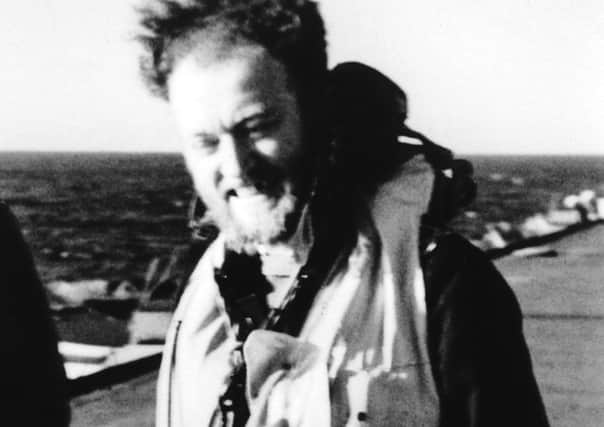Don Ridgway


He was justly proud that he played a leading role in transforming a demoralised squadron into one of the most successful of the Swordfish anti- U-boat units operating from American-built escort carriers.
After demobilisation his father persuaded him to read microbiology and food science as the food industry had changed dramatically during the war but there was an acute shortage of qualified people.
Advertisement
Hide AdAdvertisement
Hide AdHe went on to become group development director of Associated Dairies, playing a major role in the conversion of a modest dairy company into the third largest food retail company in the UK – Asda.
Don Ridgway was born in Cheshire in 1921 and after successfully taking his intermediate exam for a general science degree he volunteered to join the Fleet Air Arm as an observer. He was commissioned in December 1941 and immediately posted to fly in Walrus amphibious aircraft from HMS Berwick, a heavy First World War cruiser patrolling the Denmark Straits.
In June 1942 he was posted to join a Swordfish squadron (816) to train specifically to operate from small escort carriers. The Swordfish carried eight armour piercing rockets to provide continuous air cover to assist in the Battle of the Atlantic against German U-boats who at the time were dominant, particularly in “the gap”, an area in the mid- Atlantic outside the range of land-based aircraft.
The squadron was given the task of laying mines in the harbours of Cherbourg and Le Havre and to patrol the French coast to seek out any enemy shipping all under cover of darkness. Within six weeks it had lost over half of its aircrews.
Advertisement
Hide AdAdvertisement
Hide AdThe arrival Lieutenant Commander Freddie Nottingham DSC as commanding officer saw 816 re-born and ready to embark on HMS Tracker, an American escort carrier operating in the gap under the overall command of Captain Johnnie Walker, the most famous U-boat hunter of the war.
Their job was to provide continuous air cover for all convoys passing through the gap in both directions. It was not expected that the Swordfish would destroy many U-boats but would keep them below the surface, where they could only travel by their electric batteries at little more than three knots, making them easy targets for Walker’s frigates.
Although only three U-boats were sunk, no merchant ships were lost passing through the gap from August to December 1943. In January 1944, 816 embarked on her sister ship HMS Chaser, once again providing air cover for the Atlantic convoys. The results were spectacular – the Swordfish sighted and attacked 21 U-boats of which three were destroyed and many others damaged.
In August 1944, the squadron was disbanded and Ridgway became a senior air navigation instructor in Scotland. Having flown without a break for nearly three years and survived 74 operational sorties to become one of only four of the original aircrews of 816, he felt that his luck might run out and in April 1946 became a civilian.
Advertisement
Hide AdAdvertisement
Hide AdAfter university, he joined a large private dairy company which later became a major component of the Unigate group.
In 1957 he was head-hunted to join Model Dairies in Melbourne, Australia but after six months was persuaded to become technical director of the northern division of Unigate. During the next six years he travelled widely in Europe and Scandinavia and pioneered the production of UHT (long-life) milk. He later installed the first commercial Tetra Pak plant in the UK.
He remained fascinated with the scientific side of the industry and became increasingly involved in dairy construction. Having solved a severe trade waste problem at their cheese factory in the Yorkshire Dales, he met members of the board of Leeds-based Associated Dairies who later invited him to create a technical services division.
Invited to join the board, he focused his efforts on developing the food retailing concept that became Asda. In 1969, he was responsible for the completion of their first eight 50,000 sq ft supermarkets.
Advertisement
Hide AdAdvertisement
Hide AdHis retirement in 1984 coincided with his wife Margaret developing cancer and though she survived her health never fully recovered. For 12 years they spent most winters in the Canary Islands and summer in Wales. In 1992, she developed Alzheimer’s and in 1998 an incurable cancer. She died that November.
In 2000, Ridgway married his son’s mother-in-law Muriel Breaks, becoming the first couple to be married in this millennium at Bolton Abbey in Yorkshire.
For the following six years they travelled widely.
Muriel survives him and his daughter and son by Margaret. His twin daughters predeceased their parents.